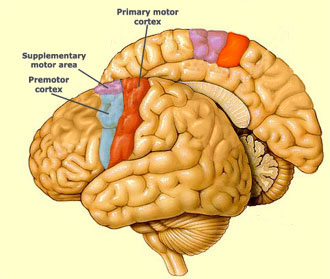In “Combat Mindset – A Beginning,” we discussed the reasons we would be willing to kill or die. We came to an understanding that using a firearm or edged weapon to end another human beings life is a violent, penetrative and messy act. We also covered the physical and emotional dangers of not properly preparing your mind for some very stressful decisions.
Being able to make decisions while under extreme stress is a necessary skill for all of us who choose to go into harm’s way. It is just as important for everybody else, but forcing horses to drink is not in my wheelhouse. Focusing on what needs to be done in that moment requires your highest levels of concentration and self-control. Understanding how to make those decisions is simple.
How do I make the decision to use deadly force? That is actually the simple part. Is the threat imminent and unavoidable? I use “unavoidable,” because I would prefer to avoid using deadly force if possible. My ego will heal and name-calling will fade, but those wound channels will be forever. After identifying if the threat is imminent and unavoidable, ask yourself does the threat meet the basic criteria:
1. Does the threat have the means? Meaning is a weapon(s), or disparity of force present and could said weapon be used to cause grave bodily injury or harm.
2. Does the threat have the opportunity? Is the threat threatening you with a handgun from 10 feet or a baseball bat from 50 yards? The person with the firearm certainly has the opportunity, but you would be hard pressed to explain why you chose to shoot the man with the bat at 50 yards.
3. Do you feel that you, or other innocent persons, are in jeopardy? Is the manifest intent, the summation of the threat’s actions, such that you can explain to a jury why you chose to use deadly force?
Is that threat imminent and unavoidable, and does it have the means, opportunity, and are you or someone on your list in jeopardy?

Always seek out the advice of counsel to gain a complete and accurate of the laws and precedents in your area. What goes in TX is not necessarily what goes in MA.
These are your checks and balances of sorts. I strongly recommend that you seek out legal counsel to ascertain what the laws and precendents in your area will support. Some will be more restrictive, while some will provide more latitude for your decisions. No matter what, you must do this brainwork ahead of time. Not doing so will cause a severe lock up in your decision making process.
Making the decision to use deadly force is determined by numerous aspects some of which we cannot streamline or eliminate. Understanding how we can reduce the number of variables will help us make the right decisions. Understanding that we have set clear parameters for ourselves and that we understand the legal parameters empowers us to make clear decisions while under stress.
By now most of us have been exposed to the concept of Boyd’s Loop, often referred to as the “OODA loop.” That being the time it takes for a person act on something after observing, orientating, and deciding to act on a stimulus. How do you improve upon that loop speed? Simply put, the brain likes what it already knows.
Observation – is the process of your identifying the stimulus and cognitively recognizing it for what it is. Reducing or eliminating unknown stimulus streamlines the observation process. Scenario based active training and extensive application of scenario based visualization (mental) training will enable you to improve your observation skills. By training your mind to see threats in all forms, it will come as less of a surprise to you when you do see an actual threat. The important feature here is to avoid narrow thinking. Visualize all aspects of an attack, vary the weapons used and be sure to include you or a loved one getting hurt in some of your scenarios.
Orientation – is the process where your brain gains an understanding of the stimulus. Having a clearly defined list of people and a solid comprehension of the law enables you to understand that the stimulus is either a threat or not. Take the time to establish your parameters. This will enable you to create a “go-no go,” system for mentally coming to terms with the stimulus.
Decision – is the process where you actually use that, “go-no go,” parameter and form a conclusion for action. That conclusion may be a simple no action required, or it could be a complex series of physical, verbal and mental actions all accomplished while under some of the highest levels of physical stress you will likely ever experience. Decision is also where “Hick’s Law” is applied. Hick indicated that by reducing the number of things to choose from, that a person could increase the speed of the decision process. Essentially is states that simple is good. Reduce the number of decisions you have; maintain basic essentials at this moment and you will drastically increase the speed in which you will act.
Act – You determine the speed of your actions. Have you trained properly to eliminate wasted motion? Have you eliminated unnecessary skills that possess a high rating in CDI (chicks dig it) factor but no application in a real gunfight? Have you physically trained your essential skills to the point where you cannot get them wrong?
Speed is the absence of wasted motion. Confidence is the number one factor is speed of thought. If you are confident in your knowledge, you can apply it much faster. If you are confident that you can recognize a weapon your observation time decreases. A clear definition of the parameters allows you to eliminate fuzzy thinking and restricts you to a predetermined path of understanding. A clear thought process based in confidence empowers you to make a conclusive decision devoid of doubt and second-guessing. All this leads up to your ability to immediately act with ruthless aggression. The most common thread amongst this process is training the brain.
Now, I am going to upset some of you and I will likely get flayed in the comments section, but try to understand that I am not the guy who likes being in the box. That being said let’s dispel with the myth of muscle memory. Most of the modern trainers understand that there is no such thing as “muscle memory.” I once had a neuro-surgeon explain it to me and he called it, “primary motor cortex neuron mapping.” Muscle tissue is not capable of memory. The brain is what remembers and subsequently sends the signals to the appropriate location within the body. Knowing this means that we can increase our training time and eliminate the need to be in a specific location to train. This is accomplished through visualization.
If you can accept that you train your mind and then do so whenever and wherever you get the opportunity, you will increase the speed of your OODA loop. This will also enable you to train physical motions such as what you need to move, shoot accurately, communicate, clear malfunctions and reload.
Working the physical essentials will help you apply Hick’s Law to your training and ultimately to your decision-making. Think about what you need to prevail in that fight. Odds are that you will need to be able to move, communicate, shoot accurately, clear a malfunction and reload your weapon. Anything beyond that is probably not a necessity and should be avoided. Ninja skills, cool gadgets and extraneous movements may look cool, but what do they do for you in that fight? If you feel you need them, then by all means include them in your plans. Just make sure you include them in your planning and training.
Simplification of choices and training the essential skills for the fight will increase your decision making speed. Keep your skills simple. Keep your skills safe. Most of all, train it physically and mentally until you cannot get it wrong. Remember while training, to devote your total attention and concentration to training. If you are going to pour tea…pour tea.





Great series. One of the best I’ve read on mindset. I’ve been a big advocate of visualization in everything I do for a long time.
From Wikipedia:
“In one of the most well-known studies on creative visualization in sports, Russian scientists compared four groups of Olympic athletes in terms of their physical and mental training ratios:
Group 1 received 100% physical training;
Group 2 received 75% physical training with 25% mental training;
Group 3 received 50% mental training with 50% physical training;
Group 3 had the best performance results, indicating that certain types of mental training, such as consciously invoking specific subjective states, can have significant measurable effects on biological performance. According to Cummins, “The Soviets had discovered that mental images can act as a prelude to muscular impulses[11] It has since become more widely understood and accepted in neuroscience and sports psychology that subjective training can cause the body to respond more favorably to consciously desired outcomes.”
Visualization should be a large part of your training. In fact, you can even use visualization to prepare for your range sessions. Visualize your drills, your goals, etc.
Keep up the good work!
A very good article. Use of deadly force is not to be taken lightly, and too many probably don’t realize that they will have to articulate what they did in the aftermath – if they survive. Like they say, there ain’t no advanced gunfight, and I see more than my share of shooters who cannot remember the simple basic skills which you described in the articleon a square range.
I learned a lot I hope you keep them coming
I hope you keep them coming